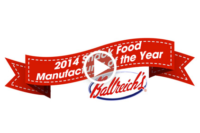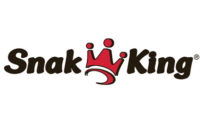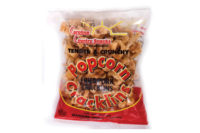Since their alleged creation by a hotel chef as a way to placate a guest who had complained about a restaurant’s thick French fries, chips have become a snack staple for Americans. U.S. supermarkets, drugstores, convenience stores and mass markets, excluding Walmart, reported more than $5 billion in potato chip sales in the 52 weeks ending July 8, 2012, according to SymphonyIRI, a Chicago-based market research firm. This is more than a 4½% increase from the same period in 2011. Unit sales totaled more than 2.5 billion during this time.
“We’re seeing substantial growth in the potato chip segment,” notes Jim Goldberg, founder and CEO of Deep River Snacks, based in Lyme, Conn. “People are snacking more, and the issue is about making it more worthwhile.”
Flavors to savor
Manufacturers are focusing on more healthful ingredient profiles and flavors to keep the potato chip segment on-trend for today’s consumers, an increasing number of which are looking for better-for-you snacks, such as chips, with extra protein and fiber and a minimum amount of fat, sugar and sodium.
“The trend in the chip market has shifted toward healthier products, as American consumers care more and more about their health,” says Roya Rohani-Cuetara, vice president of marketing at Classic Foods, Irvine, Calif. “However, although consumers desire healthier snacks, they are reluctant to give up the satisfaction of superior taste.”
She adds that because of Americans’ unwillingness to sacrifice taste and satisfaction, “the segment has become incredibly innovation-focused, as companies strive to develop new products that can deliver both great taste and satisfaction in a healthier product.”
Due to the large number of potato chip manufacturers today, there is a constant influx of new flavors and varieties—as well as more competition for space on retailers’ shelves. Rather than create a saturated market, however, the added flavors and competition have helped the potato chip segment grow.
“Two years ago, the health craze in this segment was just reaching its high point,” says Jon Betancourt, director of sales and marketing for Parkersburg, W.V.-based Mister Bee Potato Chip Co. “Now it seems the larger chip manufacturers are getting new flavors in each week.”
Mister Bee’s, for instance, plans to add to its flavor offerings soon to keep pace with the competition. “We used to sell a salt-and-vinegar variety that we will reintroduce,” says Dwight Holden, director of operations. “We’re also looking at adding habanero- and pepperoni-flavored chips.”
Ethnic flavors, including chili lime and chipotle, also remain popular. Looking to capitalize on the popularity of innovative potato chip flavors, Deep River Snacks introduced aged cheddar horseradish and New York spicy dill pickle varieties to its chip line. “Flavor trends are all about hot and unique blends,” Goldberg says. “When people snack, flavor comes first and the healthier attributes are secondary. [However], people are definitely looking for nutritious snack alternatives.”
Those looking for chips with uncommon flavors and healthier ingredient profiles will appreciate that Deep River Snack’s products are also “all-natural,” kosher and gluten-free.
Bold or nostalgic flavors
Because consumers are migrating toward unique and bolder flavors, Tim’s Cascade Snacks, Algona, Wash., will soon introduce mango habanero-flavored Hawaiian Kettle Style potato chips as well as cracked pepper and sea salt flavors. “Market data supports the many trends going on, and spices are a big part of the potato chip segment,” says company co-founder and general manager Jeff Leichleiter.
The company also produces an “all-natural,” reduced-fat chip with 6 g. of fat under its Tim’s label. Its traditional Hawaiian chip has 9 g. of fat. “This is because the oil content is slightly less due to the way we cook these products,” Leichleiter says. “We use a spinner for our all-natural, reduced-fat chip line that uses centrifugal force. This removes about 30% of the oil from the chips. Along with lowering the fat in our products, we’re focusing on all-natural ingredients.”
Boulder Canyon Natural Foods, Boulder, Colo., recently extended its line of ridged potato chip flavors with Totally Natural, Sour Cream & Chives and Honey Barbeque flavors. Other chip varieties include Malt Vinegar & Sea Salt, Sea Salt & Cracked Pepper and Olive Oil.
The kettle chip manufacturer also is seeking a healthier profile for its chips, cooking them in small-batch kettles to produce more crunch, while reducing the amount of fat per serving by about 30%, compared with traditional chips. In addition, the company re-engineered its Canyon Cut line to incorporate natural ingredients, with no trans-fats, cholesterol or monosodium glutamate (MSG).
In their search for new and innovative potato chip flavors, some chip manufacturers are even resurrecting old favorites. For example, Salem, Ore.-based Kettle Brand has brought back four nostalgic potato chip varieties for a short time: Red Chili, introduced in 1982; Jalapeno Jack, which debuted in 1989; Salsa with Mesquite, launched in 1999; and a 2005 favorite, Cheddar Beer.
The hot-and-spicy flavor trend is so dominant and fruitful, in fact, that at least one company is taking it to the next level. Deano’s Jalapenos, Hardwick, Vt., has created a jalapeno chip created from fresh jalapenos. With this production, the pepper is sliced and kettle-fried until crisp.
“We have noticed a call for hotter chips, and it was evident that this market is exploding,” says Doehne “Deano” Duckworth, owner of the company and chef/owner of The Cactus Café, a restaurant in Stowe, Vt. “At my restaurant, we offered a special habanero blend and received great feedback. People love the heat.”
The benefit of creating chips from jalapenos as opposed to potatoes is the lack of carbs and healthier profile. “We’re hearing that people are utilizing our product as a crust for fish or meat,” Duckworth says. “There’s been such a demand, that we’re making a smaller version of this product for use as a salad and soup topping.”
Hold the sodium and fat
Reducing sodium is no longer a goal for many food manufacturers—it’s a mandatory requirement by consumers. This has proved to be a conundrum for the chip segment, since salt is a key ingredient for many of these items. However, some chip manufacturers have developed lines that address consumers’ sodium concerns, while still catering to their taste buds.
For instance, Natural Snacks, L.L.C., Addison, Ill., offers a line of unsalted potato chips and is looking to extend this line to include flavored unsalted chips. “More people are health-conscious and watching their sodium intake,” explains Christine Brown, Natural Snacks’ director of marketing. “We want to add bold flavors as opposed to seasoning.”
Catering to the growing demand for snack options with less fat—another consumer concern—and more flavor, PepsiCo’s Frito-Lay division in Plano, Texas, has introduced Lay’s Kettle Cooked potato chip flavors with 40% less fat than regular potato chips. Applewood Smoked BBQ and Cooked Sun-Dried Tomato and Parmesan varieties layer flavors, another hot chip trend.
Classic Foods’ also focuses on providing a healthier, low-fat product profile. It’s Poptillas popped tortilla chip line is a chip alternative that has 25% less fat and comes in three flavors: Salsa Verde; Nacho Cheese; and Yellow Corn.
More chip innovations
The future of the chip segment will continue to be impacted by technology and the use of new, healthier ingredients. “More and more manufacturers are finally seeing the importance of all-natural ingredients and products,” Rohani-Cuetara says.
To better address the trend for healthier potato chips, Deep River Snacks is simplifying its ingredient list. The company’s salt-and-pepper brand incorporates four ingredients, including potatoes, sunflower oil, salt and pepper. “We’re simplifying ingredients to make them more true to the flavor,” Goldberg says.
And manufacturers are also addressing a common consumer complaint about healthier and popped snacks—that they sometimes lack flavor—with lines that are all-natural and flavorful.
Deano’s Jalapenos, for instance, is introducing two new flavors: Cheddar and bacon-cheddar. “There is such a demand for ‘all-natural’ as well as heat,” Duckworth says.
Natural Snacks’ product lines also have no enhancers. As a potato chip alternative, the company offers Popped Black Bean Crisps that include fiber and protein. “Beans are a big in terms of ingredient trends because they provide natural nutrition, yet keep the fat content down,” Brown says.
A fresh new look
While new flavor innovations and more healthful ingredients are reinvigorating chip brands, new potato chip packaging and redesigns are focusing on freshness and eye appeal.
“Given consumer frustration with larger bags going stale, many companies are now packaging potato chips in either resealable bags or smaller, single-serving-sized bags,” says Rohani-Cuetara.
Deep River Snacks recently updated its packaging design for today’s marketplace. “Customers want traceability, so as long as there is a viable domestic supplier, all of our packaging is made in the U.S.” Goldberg says. “We looked at recyclable and compostable products, but the industry is not quite there yet [to make it feasible to utilize].”
Natural Snacks also is looking to incorporate sustainable, recyclable packaging into its potato chip lines. “We’re looking for something that’s cost-efficient,” Brown says. “It’s hard to accomplish both [recyclable and cost-efficient]. Resealability, good looks, single servings and portability are important with potato chip packaging today.”
Tim’s Cascade Snacks is experimenting with packaging structure changes and evaluating designs for higher altitudes and better heat ranges that result in greater seal integrity. “In terms of packaging design, we utilize artists for our Hawaiian brand that hand-sketch oil paintings and integrate these into our packages,” Leichleiter says. “Many of these start as pencil sketches and are transferred into digital art.”
Because jalapeno chips are an unknown entity, Deano’s Jalapenos is investing more money to package its products in a transparent shaker jar. “This way, people can see that these are real jalapeno chips and not potato chips dusted with jalapeno seasoning,” Duckworth says. “The packaging format is going over better than our former foil bag, which didn’t have a window.”
On the processing side
More people are looking at how chips are processed to create a healthier profile. Production has gone from fried to baked to popped. “New processes are coming out that concentrate on healthier digesting and reducing fat naturally,” Brown adds.
The potato chip segment is competing with healthier snack lines that have cut into its shelf space and revenues.
“Any trend will impact the potato chip market because there is only a certain amount of space,” Betancourt says. “If we keep losing space to healthier lines and popcorn, it will always affect sales.”
Fortunately, production innovations and quality seasonings are helping the potato chip segment thrive, despite increased competition by the growing number of manufacturers. Looking ahead, consumers will continue seeking spicy and bold flavors and lines that offer healthier ingredient profiles.
“The real challenge in the retail environment will be to find space to support these items,” Leichleiter says. “There will be multichannel opportunities, and snack companies will have to look at all of the options. If products aren’t on the shelves, no one will know they exist.”
It’s also key that manufacturers educate consumers on new products and get the word out about what’s available. “As long as potato chip seasonings keep improving, packaging can extend shelf life and these products are given good exposure, this segment will continue growing,” Betancourt concludes.







